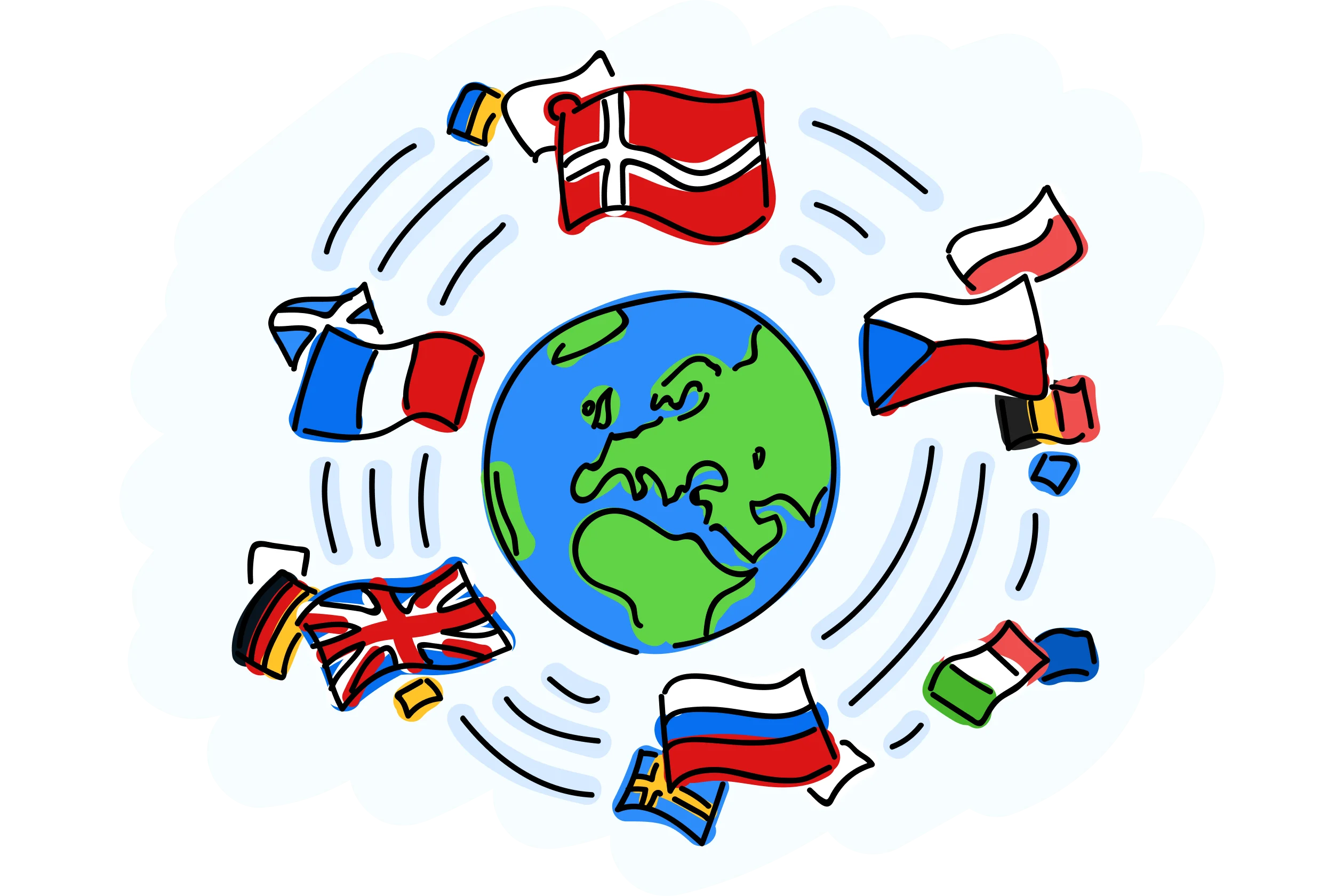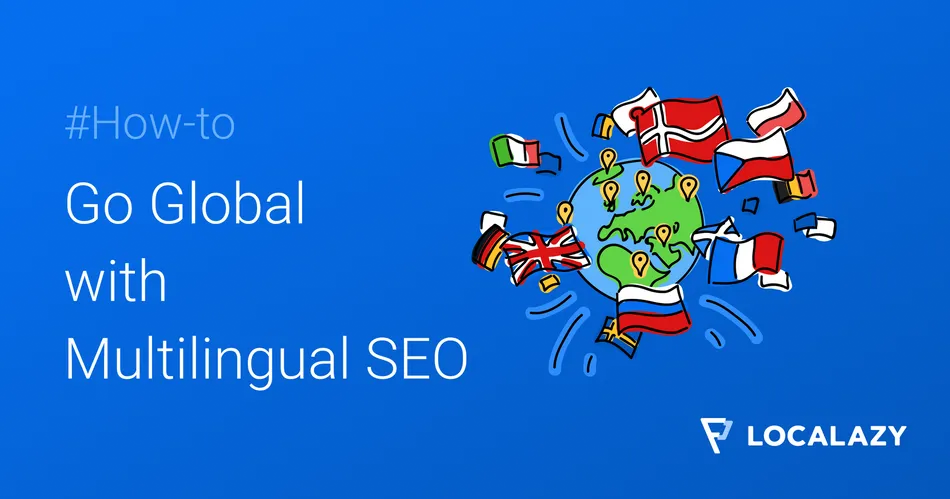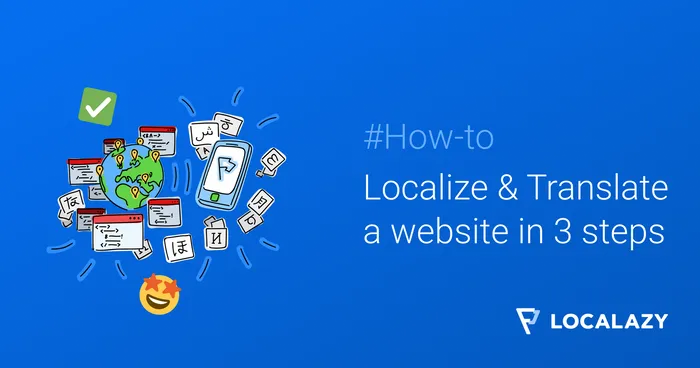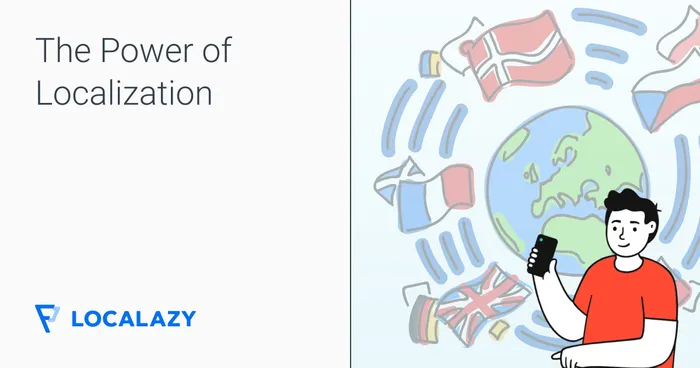Did you know that even though English is the most spoken language in the world, it has only about 390 million native speakers. And in total, 1.53 billion people worldwide speak English at some level, whether as a first or second language as per Ethnologue.
Now consider the fact that the middle class (people with some disposable income) in emerging, non-English-speaking countries is projected to almost double over the next decade, going from 354 million households in 2024 to around 687 million households by 2034.
Put together, these trends show that while English dominates globally, much of the new purchasing power will come from people whose first language is not English. That’s why going multilingual is such a powerful way to capture future growth.
Here at Localazy, we have a team of experts in localization and translation management, including multilingual SEO, so we’ve put together this in-depth guide to getting started with multilingual SEO.
💡 What is multilingual SEO, and why is it important? 🔗
If you already know the basics of SEO (keywords, backlinks, meta-tags, meta-descriptions) you’re halfway there. Multilingual SEO is about applying the same principles, but making sure your content, keywords, and metadata work in different languages and for different regions.
This is becoming more important than ever:
- English still dominates online, but it makes up only about 50% of the content on the web. That leaves half of the internet searching and buying in other languages.
- About half of people searching on Google are multilingual, often typing queries in a language that doesn’t match their device or browser settings.
- Sites that invest in localized SEO, using region-specific keywords and hreflang tags, are shown to rank far better in country-specific search results than English-only sites.
Real-world brands are already proving the point: Canva gets more than 65% of its userbase from non-English markets, and Wise generates nearly 67% of its organic traffic from multilingual content.
If your website only targets one English-speaking country, you might not feel the pressure yet. But the moment you go global, or want to reach audiences who don’t search in English, multilingual SEO quickly shifts from a nice-to-have to a must-have.
And while the technical side can get complex, working with localization specialists ensures both the search algorithms and your future customers understand you perfectly.
🎙️ How does SEO change in an AI-first world? Hear insights from Michal Pecánek, SaaS SEO consultant (ex-Ahrefs, CDN77), in this Bridging the Gap podcast episode
🗽 Countries separated by a common language 🔗
You’ve probably heard the saying that the UK and USA are “two countries separated by a common language.” In practice, this matters for SEO. Even within English, differences in spelling, vocabulary, and phrasing can affect which keywords your customers actually use.
For example:
- ✈️Travel → “holiday” in the UK vs. “vacation” in the US
- 👖Menswear → “trousers” in the UK vs. “pants” in the US
- ⛽Fuel → “petrol station” in the UK vs. “gas station” in the US
If your site only optimizes for one version, you risk missing traffic and losing relevance in search results. What seems like a small difference in wording can shift how people search and how search engines rank your content. Scale that across multiple languages, and the stakes get even higher, which is why multilingual SEO, supported by smart localization, is key to reaching audiences everywhere.

💬 Curious how multilingual content helps you stand out in AI-driven search? Here’s how it improves your Share of Voice (SoV).
🌎 Benefits of multilingual SEO 🔗
Before we dive into a step-by-step guide on how to implement multilingual SEO, let’s take a quick look at some of the benefits that are in it for you (and your customers).
- 🌐Bigger market - Nearly 89% of global consumers say they expect brands to offer online experiences in their preferred language, and 93% agree that brands should communicate in local languages across all channels.
- 🛒Increased conversions - Marketing works best when the message is clear, and when people can shop in their own language, they’re far more likely to buy than if they’re forced to interpret content in one they don’t fully understand.
- 🔍Search engine ranking boost - The more relevant your keywords are across different languages and regions, the more likely your content is to rank in local search results. Multilingual SEO helps your site show up where your audience is actually searching.
These benefits make a strong case for prioritizing multilingual SEO, but knowing why it's important is only half the equation. Let’s now look at how to build and execute a successful multilingual SEO strategy, step by step.
🏆 Steps to succeed in multilingual SEO 🔗
Step 1 - Develop a strategy 🔗
Before anything else, define where you’re going and why. Multilingual SEO is most effective when it’s grounded in a clear understanding of your target markets and not just what languages people speak, but whether there’s real demand for what you offer. Start by evaluating the following:
- 📈 Market demand – Are people actively searching for your type of product or service in this country?
- 🧮 Market size – How large is the relevant audience or customer base?
- 💰 Spending power – Do potential buyers in this region have the disposable income to convert?
This analysis helps you avoid wasted effort translating for markets that aren’t ready or relevant. Once you’ve gathered the data, rank your target countries by opportunity, and build a language roadmap, starting with the ones that offer the strongest growth potential.
A solid strategy at this stage saves time later and sets the foundation for scalable multilingual SEO execution.

Step 2 - Do your research 🔗
When people talk about SEO, the first thing that springs to mind is keywords. But focusing on keywords right from the outset is a bit of a mistake. You’re far better off researching topics and basing your SEO strategy around topic areas rather than going straight in and trying to hit keywords.
Take sporting goods as an example. In the UK, 🏏 cricket may be a high-interest topic. In Spain, it won’t move the needle. So instead of forcing the same strategy everywhere, adapt your content themes to fit each market, then layer on keyword research that fits those themes.
This approach gives your multilingual SEO a stronger foundation and helps you avoid pushing content that doesn’t connect locally.

Step 3 - Find the right keywords 🔗
Once you know which countries and regions you're targeting, it's time to dig into the actual keywords your audience is searching for in those languages. This means using tools that give you local search volume, keyword difficulty, and intent data. Semrush, Ahrefs, and similar tools are a great starting point.
When doing keyword research across multiple languages, don’t assume that direct translations will perform well. A phrase that works in English might not carry the same meaning (or any meaning at all) in another language. That’s why it’s important to treat each language as its own search environment.
Focus on how people in each market naturally talk about your product or problem space, and base your keyword selection on real search behavior, not just translation. This avoids wasted effort and helps your content appear in the searches that actually drive traffic.
🌐 Need to make your site multilingual? Localazy helps you automate translations at scale. Perfect for teams that want full control without extra work.
Step 4 - Apply on-page and technical multilingual SEO 🔗
The next stage is to implement your multilingual SEO strategy and apply the keywords you've researched. This part can get fairly technical and time-consuming, especially if you're managing multiple languages, so it often makes sense to bring in multilingual SEO specialists.
Working with professionals means you'll have proper monitoring and reporting in place, along with ongoing adjustments as your site evolves.
They’ll also handle technical details like text expansion or contraction, something that matters a lot when translating meta titles and descriptions. Since these fields often have strict character limits, the translated version needs to stay within bounds without losing clarity or impact.

Example technique - using the hreflang attribute
A key part of multilingual SEO is making sure that different language versions of your content are correctly recognized and served by search engines. One effective technique for this is using the hreflang attribute.
While translating your content is a strong move for organic growth, it's not just about cloning a page and swapping out the language. You need to clearly signal which version is meant for which audience. The hreflang attribute does exactly that. It tells search engines which language and regional version of a page to show users.
Here’s a simple example:
< link rel="alternate" href="http://example.com/your-product" hreflang="en-us" />
< link rel="alternate" href="http://example.de/beispielprodukt" hreflang="de-de" />
< link rel="alternate" href="http://example.cz/vzorovy-produkt" hreflang="cs-cs" />Each version links back to the others, making the connection clear to crawlers and helping prevent duplicate content issues. If you skip this step, your translated pages might not perform as well in local search results.
There are many more aspects to consider which would fill a book of multilingual SEO techniques. (Should we write one?) But, if you don't have the time to dive deep into multilingual SEO, you should hire professionals in the field to help you implement everything correctly to get the most out of your multilingual content.
📚 You might also like: 🔗
- 🧮 A beginner's guide to pluralization in software localization
- 🤖 How to automate the entire software localization process from development to translation with Localazy
- ⚠️ 6 ways software localization goes wrong when you're growing fast
🚩 Put your global SEO strategy into motion 🔗
Going multilingual isn't just about translating a few pages. This guide walked through building a strategy, researching topics, finding the right keywords in each market, handling the technical side of SEO, and using tools like hreflang to make it all work. When done properly, multilingual SEO helps you grow organically in every region you target.
And when it’s time to scale, you’ll want tools that can keep up. Localazy fits right into your existing workflow with API integrations, automation features, and a translation system that combines AI speed with human precision. It’s built to support continuous localization, so your multilingual content stays accurate, consistent, and always ready to rank.
Want to see how easy going multilingual can be? Start with Localazy, and let your site or app grow global, one translation at a time.




